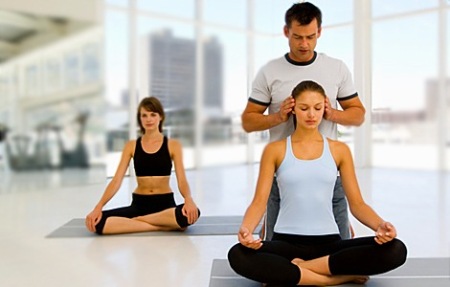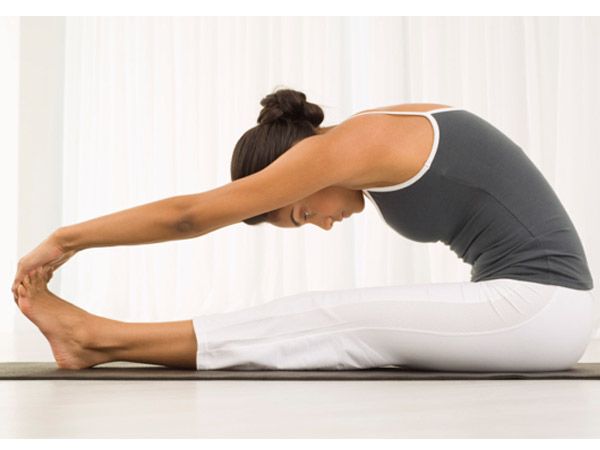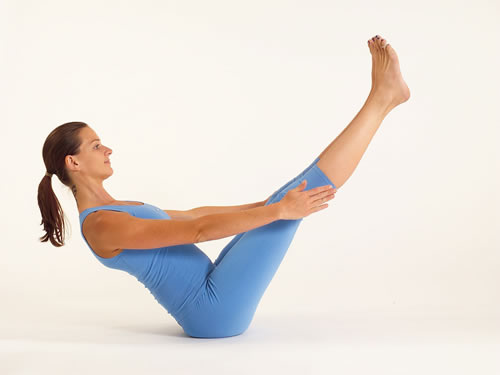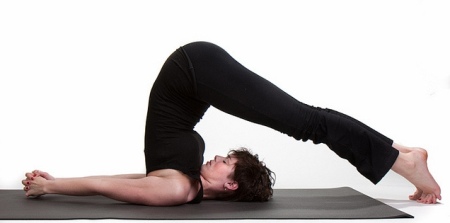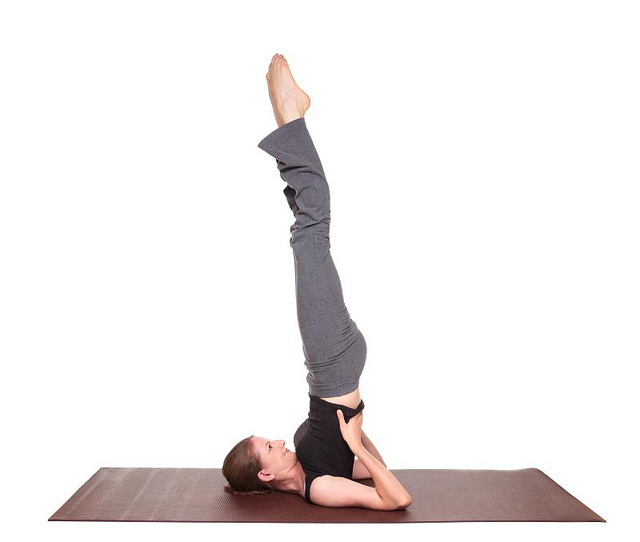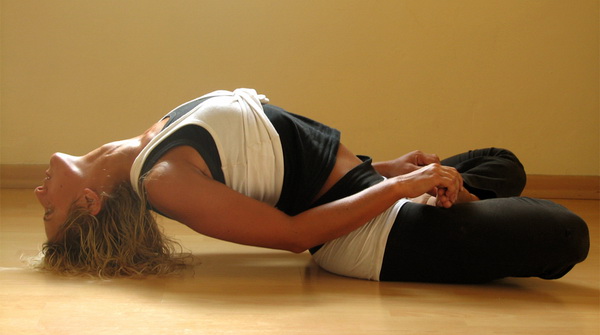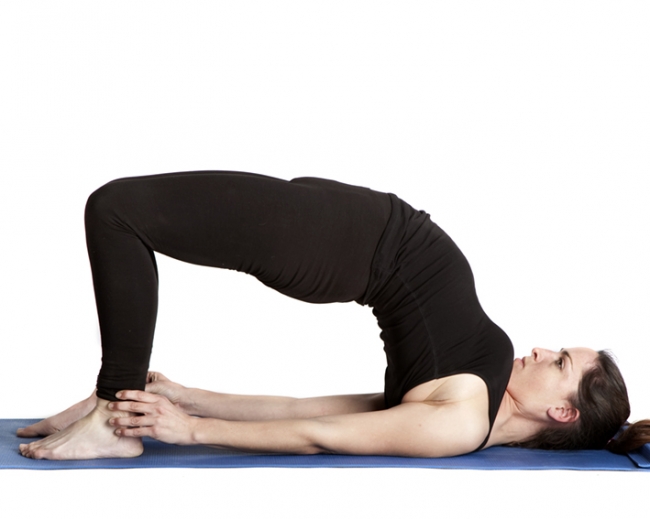Yoga involves a wide variety of exercises ranging from postural and breathing to relaxation and meditation. One of the main purposes of a particular yoga pose is to improve the health and activity of the thyroid glands. The thyroid gland is located in lower part of the throat which secretes a hormone called thyroxine. Thyroxine helps the body in using energy effectively, regulating body temperature and keeping the brain, heart and muscles functioning properly. All yoga postures should be done only under guidance of an expert instructor. The problems associated with it include fatigue, fluctuation in weight, mood swings, pain in the joints, irregular sleeping patterns and water retention.
Pranayam
Begin yoga practice with pranayam or the breathing technique. Sit on the mat in a meditative position with your legs folded one on top of the other. Rest both your hands on the knees with your thumb touching the first finger of each hand, keep your eyes closed and concentrate on your breathing. Take 4 to 5 long breaths, now contract the inner muscles of your throat and then breathe through your nostrils. A buzzing sound is felt when the inhaled air touches the compressed muscles. Do not hold your breath in the beginning but with practice start holding the breath for as long as possible. Now slowly exhale through your left nostril by putting your right hand thumb on your right nostril. This exercise is very beneficial for the regulation of thyroid gland due to the contraction caused in the throat muscles. This asana does not have any side effects and can be performed for as long as possible without any supervision.
Paschimottan asana
In paschimottan asana or the forward bending pose as the name suggests, sit on the yoga mat with your legs stretched in front of you. Place yoga cushion on your knees and bend forward touching your toes. Relax your head on the cushion, if your hands are unable to reach the toes, then relax your arms on the yoga cushions as well. Hold the posture for 2 to 5 minutes and come back to the normal. Repeat it 4 to 5 times daily for best results. It may seem a little difficult in the beginning but with practice you will be able to touch your feet easily. Though this exercise may appear simple but it is better to take the guidance of an expert instructor. This yoga posture increases the hormonal secretion of the thyroid gland.
Paripurna navasna
Paripurna navasana or the full boat pose is a seated pose. To perform this exercise sit on your yoga mat with your legs stretched in front of you. Now lean back slightly so that your weight is on your spine and hips, lifting your chest and maintaining a straight back. Bend your knees and lift your feet up pointing the ceiling to create shape of a boat. Stretch your arms alongside your legs and use your abdominal muscles to support the pose. Breathe and hold for 10 to 20 counts and come back to normal. Do 5 counts of this exercise for good results. This posture isrequired to be done under the supervision of an expert instructor to avoid straining the back. This pose stimulates the thyroid and strengthens the abdominal muscles.
Hal asana
Hal asana or the plow pose is a common yoga posture. To perform this asana, lie on your back and slowly raise both your legs, and bring them over your head to rest your toes on the floor. Keep your legs aligned and stretched straight supporting your hips with your elbows. Remember the weight of the body should be on your shoulders and not on your neck. Hold the posture for 5 to 10 counts and slowly come back to normal. Do this exercise 3 to 4 times to achieve good results. This exercise should be done under expert supervision to avoid injuring your neck. The plow pose not only helps in regulating the thyroid problem but also reduces back aches.
Sarvang asana
Sarvang asana is known to be the mother of all poses. Lie with your face up on the yoga mat, keeping your legs stretched straight. Raise your legs slowly towards the ceiling, lifting your torso and buttocks in the air. Support your hips with your hands by resting your elbows on the ground. While performing this exercise press your chin against the chest and keep the back of your neck, head and shoulder on the ground. Hold for 10 counts and come to normal and with practice increase the duration of the count This asana increases the blood supply to the thyroid and parathyroid gland because of the tight chin compression thus regulating its function. Perform this asana only under instructor’s supervision until you learn it properly.
Matsaya asana
Matsaya asana or the fish pose is the counter shoulder pose which eliminates stiffness in shoulder and neck. Lie on your back with your knees bent and feet flat on the ground. Lift your torso slightly off the ground and support your hips with your palms, placing the elbows close to your body on the floor. Hold the pose for 20 to 30 seconds and repeat 4 to 5 times. This asana would be more beneficial if paired up with sarvang asana or the shoulder stand pose. Learn it from an expert instructor to practice it yourself. This pose stretches and stimulates glands in the neck and throat.
Setubandha sarvanga asana
Setubandha sarvang asana or the bridge pose is a calming pose for brain and energizing for tired legs. Lie on your back with your knees bent and feet on the floor. Keep your arms stretched straight on your sides with your palms flat. Push your heels and squeeze your buttocks and raise your hips off the floor. Tuck your chin against your chest and rest your head and shoulder on the floor. Hold for 15 to 20 counts. This pose would be more beneficial if paired with sarvang asana. It is an easy posture which stimulates thyroid glands.




